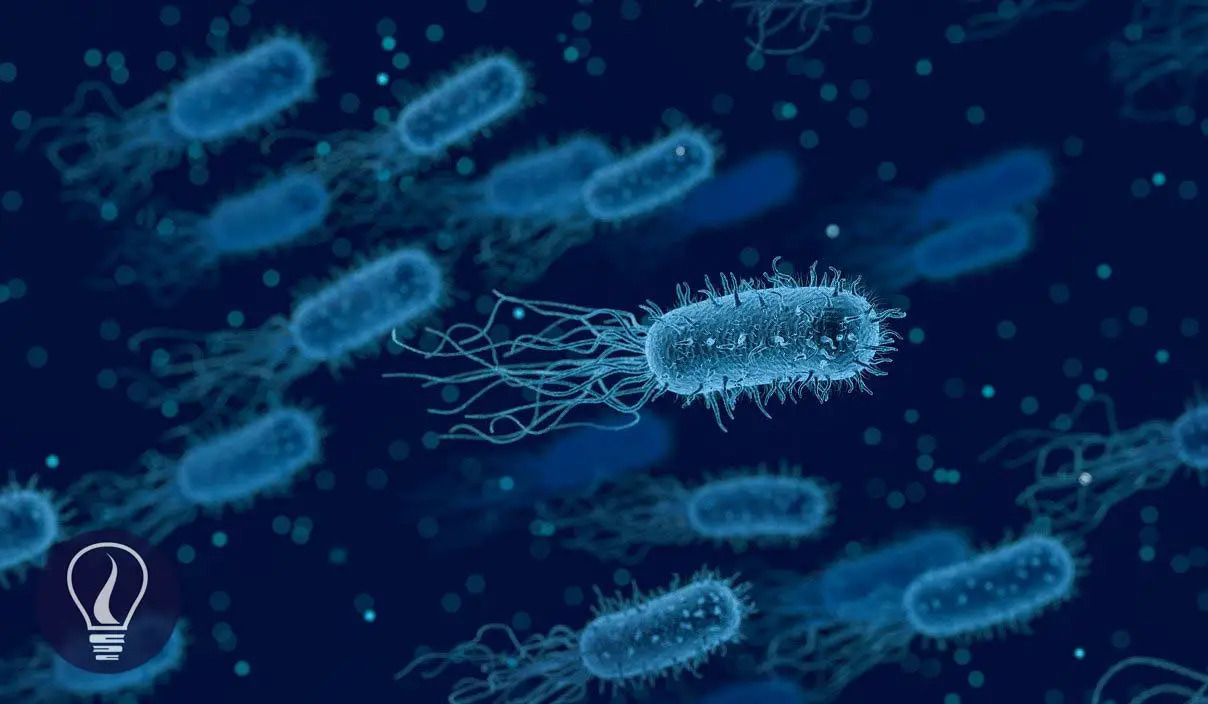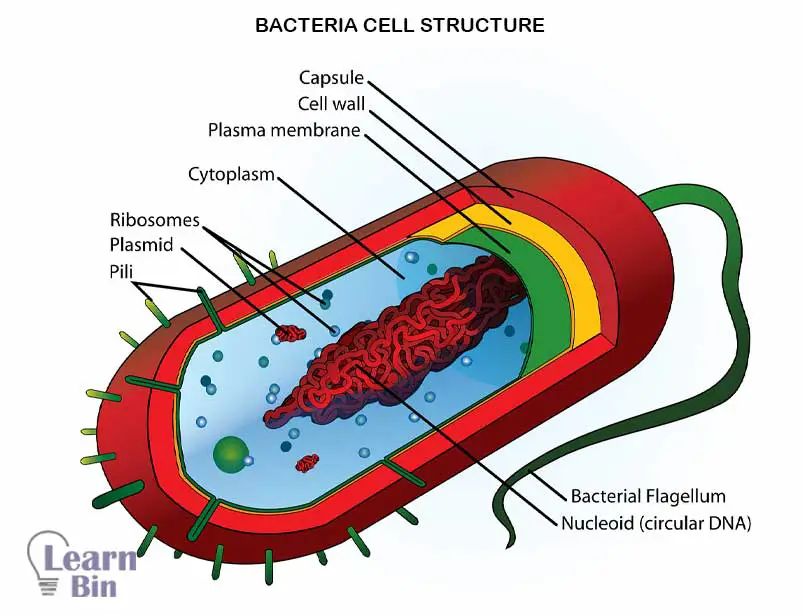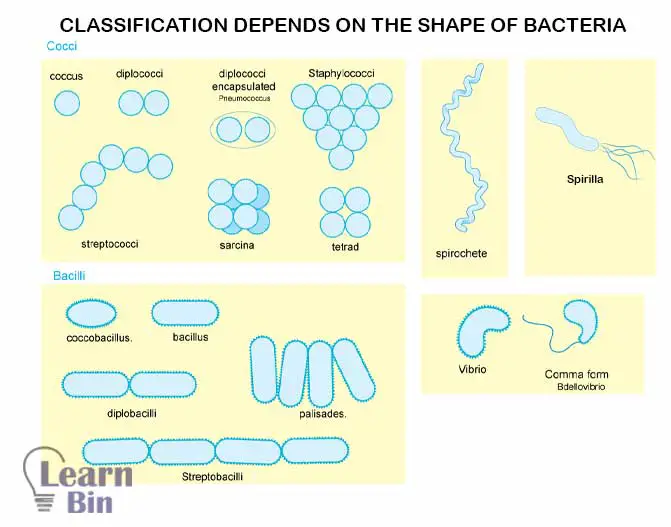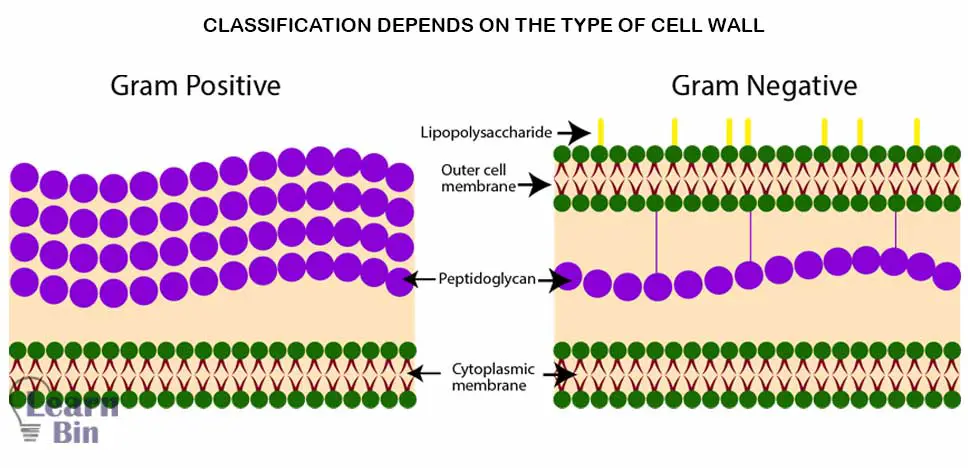More results...


Domain bacteria have only one kingdom, kingdom Bacteria also known as kingdom Monera. Organisms that are classified under the bacteria kingdom are single-celled prokaryotic organisms.
Covering the cytoplasm there is a cell membrane, cell wall, and cell capsule. The cell wall is made of “Murine”. A cell capsule is usually a polysaccharide structure. Bacteria contain two types of DNA; Bacterial chromosomes and Plasmids. Both are circular, double-stranded DNA molecules. Plasmids are small circular DNA molecules that are separate from bacterial chromosomes.

Plasmids can replicate independently. Bacterial chromosomes are larger than plasmids, and it has all the information needed for the cell to survive. The reproduction of bacteria is by binary fission.
Bacteria show different respiration types, different nutrition types, different shapes, etc. some bacteria have flagella which is a protein core. There is also a difference between bacteria in flagellation.
Bacteria are classified into four categories depending on their oxygen requirement for respiration.
| Aerobic bacteria | Bacteria grow only in oxygenated environments. They require oxygen for survival. | Acetobacter Gluconobacter |
| Anaerobic bacteria | Anaerobic bacteria grow only in oxygen-free environments. Oxygen is toxic for anaerobes. | Clostridium |
| Facultative anaerobic bacteria | Bacteria can grow in both presence and absence of oxygen. When the presence of oxygen they use oxygen for respiration. In the absence of oxygen, they switch to fermentation. | Lactobacillus Escherichia coli |
| Microaerophile | Microaerophiles need oxygen to survive. But they grow at very lower concentrations of oxygen. Typically, 2–10% O2 | Campylobacter |
Bacteria can be divided into two main groups according to the source of the carbon used for nutrition.
Autotrophic bacteria can produce their own food inside the cell. They use inorganic carbon / CO2 as the source of carbon. Autotrophic bacteria can be divided into two categories depending on the energy source that they use to produce food.
a. Photoautotrophic bacteria – synthesize their own organic food by using CO2 and photo energy.
E.g.: cyanobacteria, purple sulfur bacteria
b. Chemoautotrophic bacteria - They synthesize their own organic food by using CO2 and chemical energy.
E.g., Nitrosomonas, Nitrobacter
Heterotrophic bacteria cannot produce their own food. So, they use organic nutrition. (organic carbon). The heterotrophic bacteria can also be divided into two categories depending on their energy source.
a. Photoheterotrophic bacteria – bacteria that feed on organic compounds as the carbon source and photo energy as the energy source.
E.g., purple non-sulfur bacteria
b. Chemoheterotrophic bacteria - bacteria that feed on organic compounds as the carbon source and chemical energy as the energy source.
E.g., Sulfur-oxidizing bacteria, Nitrogen-fixing bacteria, and Iron-oxidizing bacteria.
Bacteria are classified into five categories depending on their shape.

Depending on the type of cell wall bacteria can be divided into two categories gram-positive and gram-negative. Gram-positive bacteria have a thick peptidoglycan layer and no outer lipid membrane. Gram-negative bacteria have a thin layer of peptidoglycan and an outer lipid membrane.
Gram-positive bacteria give a positive result on a Gram-positive test and appear purple when seen through an optical microscope. Gram-positive bacteria retain the crystal violet stain while gram-negative bacteria do not retain the crystal violet stain used in the gram-gram staining method.


Sciencelearn.org - Bacterial DNA – the role of plasmids
Technologynetworks.com - Gram Positive vs Gram-Negative
Serc.carleton.edu - Gram Staining
Cover Image was designed using an image by Arek Socha from Pixabay
Figure 01: Image by Clker-Free-Vector-Images from Pixabay
Figure 02: Image by LadyofHats, Public domain, via Wikimedia Commons